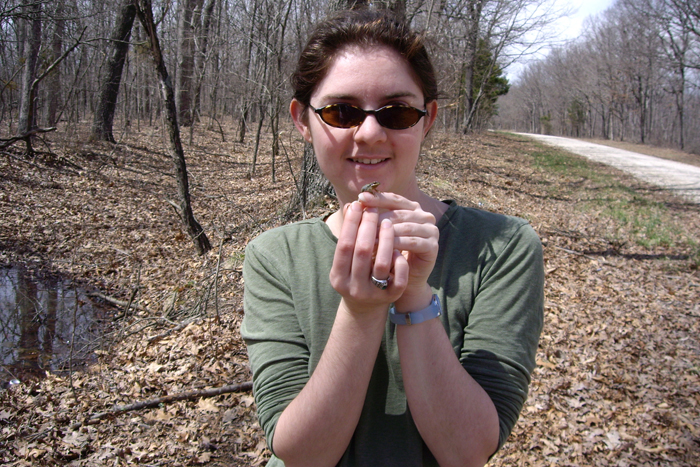Frog Population Decline Linked to Killer Pathogen

A virus lethal to wood frog tadpoles may be partly responsible for the alarming and widespread extinction of amphibians seen in recent decades.
The study from the NSF-funded National Institute for Mathematical and Biological Synthesis (NIMBioS) showed that ranavirus, a killer pathogen that causes frogs' internal organs to bleed profusely, could lead to the extinction of isolated populations of wood frogs. "We looked at isolated populations because we wanted to know if it was at all possible that ranavirus could cause extinctions, and isolated populations were the most likely," said lead researcher and NIMBioS postdoctoral fellow Julia Earl.

The results help fill out the picture of what is happening to the world's amphibians. According to the International Union for Conservation of Nature — which evaluates species' vitality and threat levels in its Red List of Threatened Species — amphibians are the most imperiled of vertebrates, with one third of them classified as globally threatened or extinct. Scientists have linked the decline of amphibians to a fungal disease called chytridiomycosis, but the new study shows ranavirus may be a culprit as well.
Wood frogs, widely distributed throughout North America, are highly susceptible to ranavirus, especially as tadpoles. The new study used mathematical modeling to investigate how ranavirus affects isolated frog populations at different stages in their life cycles.
Earl and her team determined that the stage at which frogs were exposed to ranavirus was a critical factor in determining extinction and rates of decline. Extinction was most likely to occur when tadpoles and "metamorphs" — tadpoles metamorphosing into frogs — in small communities were exposed to ranavirus at frequent intervals. Small populations exposed every year could become extinct in five years; small populations exposed every two years could become extinct in 25-44 years.
Exposure at the egg stage was apparently not as dangerous, perhaps because of protection afforded by the membrane.
Once exposed to ranavirus, a wood frog can die within three days. It can catch the virus in the water, through direct contact with infected frogs and when scavenging dead and infected frogs. There is no cure or treatment for the disease.
Sign up for the Live Science daily newsletter now
Get the world’s most fascinating discoveries delivered straight to your inbox.

The study appeared in the journal EcoHealth.
Earl is continuing to look at amphibian decline: She recently built mathematical models to investigate whether immigration of frogs into a population from other areas alters the probability of extinction and decline.
The National Institute for Mathematical and Biological Synthesis brings together researchers from around the world to collaborate across disciplinary boundaries to investigate solutions to basic and applied problems in the life sciences.
This Behind the Scenes article was provided to LiveScience in partnership with the National Science Foundation.
Editor's Note: The researchers depicted in Behind the Scenes articles have been supported by the National Science Foundation, the federal agency charged with funding basic research and education across all fields of science and engineering. Any opinions, findings, and conclusions or recommendations expressed in this material are those of the author and do not necessarily reflect the views of the National Science Foundation. See the Behind the Scenes Archive.










